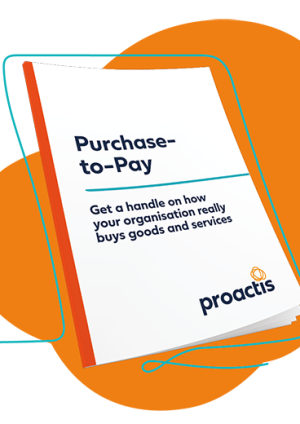27 January 2006
The tougher CPA is here and there is no hiding place. One of the weak spots is external funding, with many councils displaying a frightening lack of control over and knowledge of grant bids. Guy Clifton advises
The overwhelming message to come from the 2005 Comprehensive Performance Assessment is that single-tier councils are seen as failing to give value for money, but that most are working hard to meet the latest round of efficiency targets. While this CPA's focus on value for money is contentious, the results cannot and should not be ignored.
At a time when the government is challenging local authorities to work creatively to find solutions to resource challenges and to adopt a more entrepreneurial approach, being able to attract non-mainstream sources of finance in a structured and strategic way is more essential than ever.
CPA 2005 made specific reference to councils' ability to attract external funds by following a more strategic approach. External funds are defined as money paid to local authorities not accounted for within the formula spending share and distributed by various UK and European Union agencies. Many councils proved they met these criteria by successfully generating non-mainstream funding and having policies, systems and processes in place to support this activity.
While the CPA makes specific reference to external funding and partnerships (see table), other key lines of enquiry (KLOE) relate to the way a council manages external funding. For example, the corporate business plan must drive the council's medium-term financial strategy and internal resource allocation, with any changes determined in accordance with policies and priorities; there must be project appraisals, business plans and affordability tests for new policy and capital developments; and budgets must be linked to risk assessments of material items of revenue and capital income and expenditure (KLOE 2.1 level 3 score).
Too often, councils fail to risk-assess the implications of agreeing to provide lead or accountable body functions as part of a council-led external funding bid; many fail to understand properly the full resource implications and liabilities of a successful bid. Furthermore, governance arrangements are often overlooked. These include agreeing service level agreements with partnerships and ensuring robust delegations are in place. In addition, a number of KLOEs in the revised CPA corporate assessment focus on partnership governance arrangements and the approach to risk assessment relating to partnership activity.
A key evidence criteria for KLOE 5.2 – the council manages and improves value for money – is that spending decisions take account of all full-term costs. By not taking a corporate approach to the management of external funding, bids are likely to be knee-jerk reactions to funding availability – an opportunistic dash for cash, lacking corporate co-ordination and with little finance involvement.
Ideally, they should be project-driven, proactive ventures for which the finance function provides appropriate input and analysis, including effective risk assessment, options appraisal, cash flow forecasts and affordability tests.
The lack of a strategic approach to the management of external funding should be of major concern for finance directors because an uncoordinated approach can have damaging consequences. For one thing, when authorities fail to consider which project ideas should be supported and resourced to progress to the bidding stage, the project development and project delivery implications (for successful bids) can dislocate from the council's medium-term financial planning.
Many councils find themselves delivering projects that do not meet corporate priorities, or providing lead and accountable body services to myriad partnerships without properly understanding the resource implications or ensuring that bidding is aligned to the financial planning process.
All this has a negative impact on a council's CPA rating. Other negative implications are likely when individual officers or services develop applications for grant funding on an ad hoc basis, and when there are no corporate bidding protocols to provide gateways to a bid's progress. Examples include:
- no effective corporate prioritisation of which projects to support and resource
- inappropriate consideration of the project's alignment to corporate goals and objectives
- an incomplete understanding of all the financial consequences, risks and liabilities arising from a successful application, particularly where the council is to provide the lead or accountable body function
- poor forward planning, including ineffective cash flow forecasting and consideration of succession funding, resulting in future unplanned mainstream growth bids to counter grant fallout
- downstream difficulties in the way that grant income is managed, received and disbursed
- inconsistent sharing and use of good financial, legal, programme and project management practice, and
- an increase in the chances of receiving a qualified grant audit.
The emerging results from CPA 2005 indicate that for many types of council the 'direction of travel' towards best practice in external funding is likely to be a long journey with a number of obstacles still to overcome. This is backed up by CIPFA's external funding survey, which indicates that 62% of local authorities in England and Wales do not have a corporate external funding strategy in place. On top of this, 68% of respondents have no co-ordinated approach to bid management, and 67% do not have appropriate financial regulations in place to ensure that the chief financial officer signs off bid submissions.
Furthermore, 54% of local authorities said they did not know the cost of the bidding process – and therefore would not be able to calculate the return on their investment. As if this wasn't surprising enough, the survey also indicates that many councils don't know how many bids are submitted annually and, of those, how many are successful.
Perhaps the reason for this failure to adopt good corporate practice is that only a minority (5%) of survey respondents had had any grant suspended, withheld or reclaimed by funding bodies, normally as a result of a poor audit. Interestingly, 25% of these did not know the value of the grant concerned.
The apparent complacency or unwillingness of authorities to manage external funding effectively is likely to change as a result of CPA 2005. This is in terms not only of the strategic approach and systems being adopted, but also the need to have accurate data to compare with other councils.
Councils are currently completing the second CIPFA external funding survey and have until March 3 to return their questionnaire. If you think you should know the answers to the questions on the right – and want to know how your authority compares with its peer group – completing the survey is the best way of finding out.
With the harder CPA test now a reality, failure to act might mean that too much external funding is in fact bad for your organisation's health.
Guy Clifton is head of the Funding Advisory Service Team (Fast) at RSM Robson Rhodes LLP and is chair of CIPFA's external funding working party
Extracts from CPA Use of Resources' Key Lines of Enquiry
Key Question 4.2 – The council has arrangements in place to maintain a sound system of internal control
Typical performance to receive a score of 2 – There are partnership agreements in place for all the council's significant partnership arrangements
Typical performance to receive a score of 4– The standing orders, standing financial instructions and scheme of delegation make specific reference to partnerships. Partnership agreements are subject to regular review and updating
Key Question 5.2 – The council manages and improves value for money
Typical performance to receive a score of 2 [extract] – External funding is sought where appropriate to support local priorities
Typical performance to receive a score of 3 [extract] – External funding is sought strategically to support local priorities and the council has a successful track record of securing external funding and using it to deliver required outcomes and increased value for local people
Source: Key Lines of Enquiry for Use of Resources (Audit Commission, June 2005)
PFjan2006


















